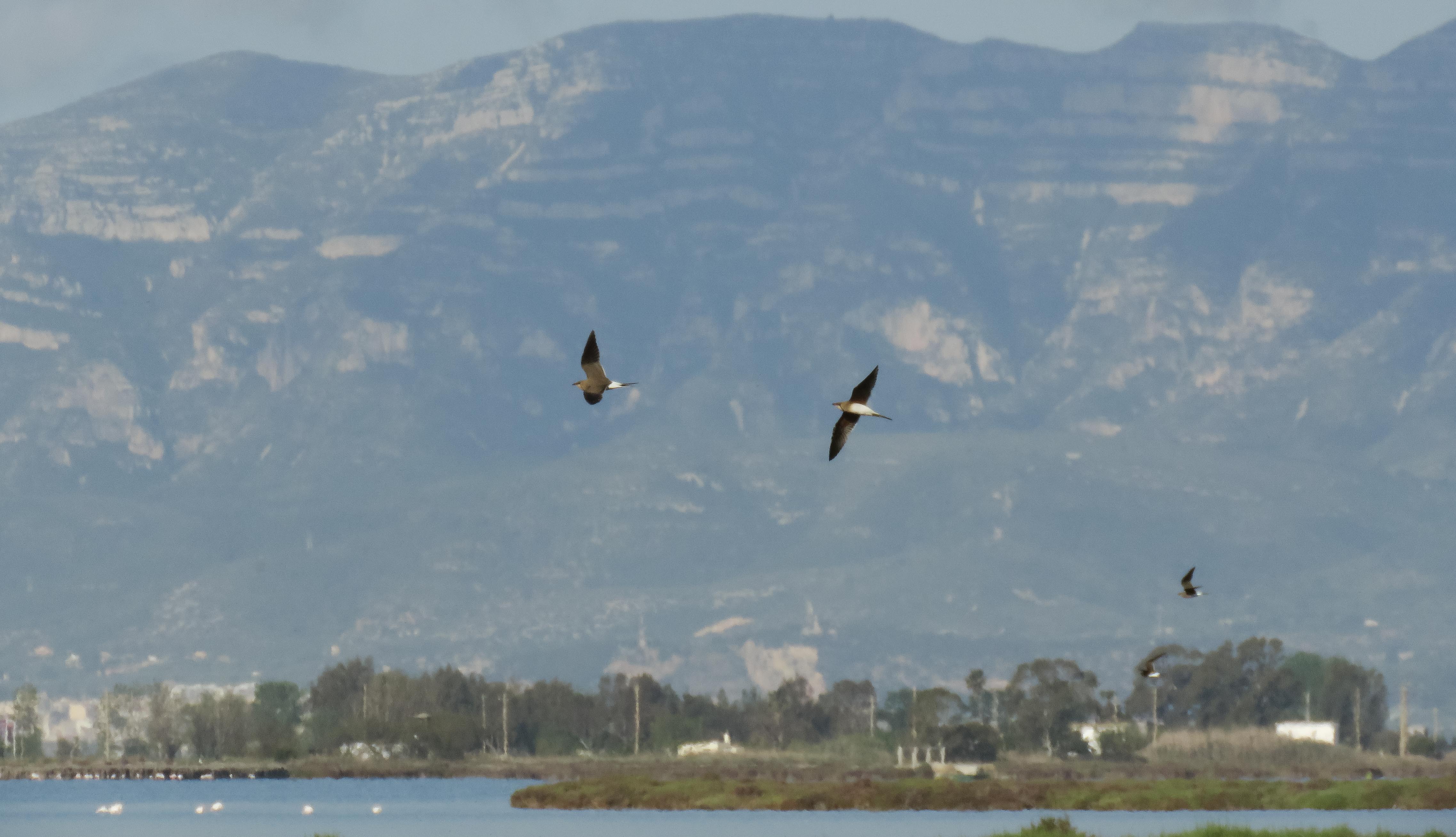Cory’s Shearwater 3 pale bill seen with tip appearing dark. Very relaxed flight action on bowed wings. Darker coverts and primaries contrasted with paler secondaries on the upperwing and upperside of body giving something of a W appearance – if only one had dark underwings!! Underparts, axillaries and belly unmarked white. White underwing coverts contrasted with black borders. Underside of primaries dark.
Manx Shearwater c.3 upperparts appeared dark with slight brownish tinge. However, all seen well showed the white hook up onto the ear coverts lacked by Yelkouan Shearwater. Underparts white and contrastingly so.
Storm Petrel c.200
Wilson’s Storm-Petrel 2 – 3 Found the first at c.12.50pm. After steaming to c.25km SW of Scilly the Scillonian III decided to abort its attempt to reach the ‘Wilson’s Triangle’ being a further c.40km to the SW due to the adverse sea conditions. After c.30 minutes of chumming at that location, no Wilson’s Petrels had been seen, so it was decided to head for an area c.10km NW of the Bishop’s Rock Lighthouse where 2 Wilson’s Petrels had been sighted the previous evening from a pelagic trip from St. Mary’s. The journey was reckoned to take around c.2 hours. I had noticed that a good number of Storm Petrels had remained in the wake of the Scillonian III since leaving the chum slick c.25km SW of Scilly and I had continued to watch these for c.30 minutes whilst we were steaming N. At c.12.50pm I suddenly became aware of a slightly larger, broader-winged, white-rumped Petrel that had a noticeably different, more gliding, flight action. It was clearly less flickering than the accompanying Storm Petrels, being one of the two closest Petrels following the ship at c.50m range. Suspecting it to be a Wilson’s Petrel I nearly immediately shouted to that effect, but thought I’d better see something more critical before doing so, fully expecting, in the meantime, that someone else would draw attention to it. Fortunately the bird immediately banked and revealed almost oval pale panels across the greater coverts of the upperwings and toes clearly projecting beyond the tail. I then shouted ‘Wilson’s Petrel in the wake’ and the usual ‘Scillonian panic’ ensued with observers shouting for directions etc. In such a situation, I had that almost immediate heart-stopping moment, when I feared it would suddenly take-on the appearance of a Storm Petrel, but thankfully that didn’t happen. Observers closest to me were soon watching the bird and discussing the identification features as it criss-crossed the wake several times. The aforementioned features could again be clearly seen along with what appeared wholly dark underwings whereas the accompanying Storm Petrel was showing the broad white band across the underwing coverts. Other observers were shouting directions and it was clear that many were by now enjoying the views. Despite checking I could see no indication of wing moult unlike some of the Wilson’s Petrels seen on previous Scillonian pelagic trips. Both birds then drifted out to the left for c.100m whereupon the Wilson’s foot-paddled on the surface of the water on several occasions taking on a very rounded-winged appearance (completely lacking the ‘ragged’ appearance of a Leach’s) and, although a cliché, an almost slow-motion butterfly-like flight action, before it again headed for the wake but by now unfortunately considerably more distant. The Ship’s tanoy had relayed the news and the boat had already slowed and started to turn. The Wilson’s Petrel was soon lost from view and despite chumming it failed to reappear. Fortunately, virtually every observer on deck had seen the bird (c.100) and a few took the trouble to congratulate me on having picked it out. After chumming for a while the ship continued on its way and after another 40 minutes or so another Wilson’s Petrel was found in the wake by another observer. This bird was a different individual as its longest primaries projected beyond the other primaries forming obvious ‘hooks’ to the wingtips. The pale panels across the upperwing coverts appeared slightly more well-marked, the flight action and wing-shape as characteristic as the first.
Gannet c.200
Common Buzzard 1 on lamp post at HayleKnot 1w/p at sea
Turnstone c.2 at sea
Bonxie c.8 including a very pale almost ashy-grey adult that appeared quite small and small and thin-billed.
Arctic Skua 1 ad. Dark morph
Herring Gull c.10
Lesser Black-backed Gull c.200 incl. Many juv.s
Kittiwake c.10
Sabine’s Gull 1 ad. Losing dark head appearing pale smudgy grey so some do moult prior to their annual migration.
Common Tern c.5
Black Tern 2











